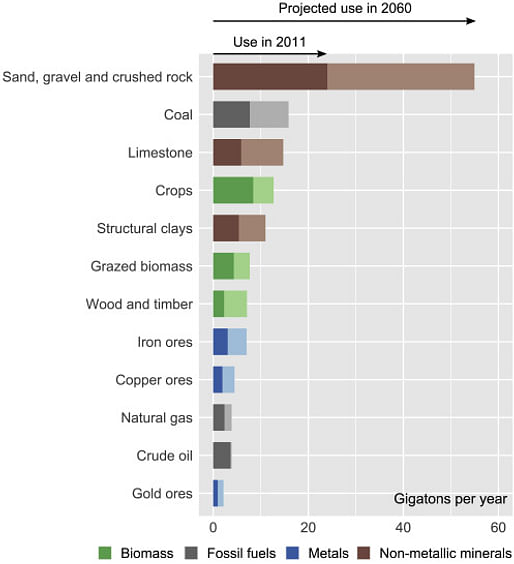
A new scientific paper has warned of the looming environmental and social consequences of the world’s appetite for sand. The study, headed by Aurora Torres at Michigan State University’s fisheries and wildlife school, notes that the global demand for sand and gravel is set to double by 2060, driven by the construction and expansion of cities and infrastructure.
The study, published in the journal One Earth, notes that “sand, gravel, and crushed rock, together referred to as construction aggregates, are the [world’s] most extracted solid materials. Growing demand is damaging ecosystems, triggering social conflicts, and fueling concerns over sand scarcity. Balancing protection efforts and extraction to meet society's needs requires designing sustainable pathways at a system level.”
In total, around 50 billion tons of sand, gravel, and crushed rock are used by humankind each year. As a key ingredient in the production of concrete and glass, sand plays an important role in the construction of almost every component of the built environment, from buildings and walls to bridges and tunnels.

As a global shift from rural to urban areas continues, it is expected to that eight cities the size of New York will be built each year for the next thirty years. As a result, global use of sand, gravel, and crushed rock is set to dwarf the use of all other solid materials on Earth, hitting over 50 gigatons per year by 2060. Torres’ study also makes the ironic point that coastal responses to climate change, which will involve significant construction and upgrading of sea walls and flood defenses, will also contribute to an increased demand for sand mining.
Despite our reliance on sand, the global supply network is poorly regulated and managed, leading to a lack of data and understanding over the quantities and impact of the network on both the environment and social fabrics. To overcome this, the latest paper departs from its predecessors, which tended only to focus on excavation sites, and instead undertook a broader overview of the network. “We take a broad look at the physical and socio-environmental dimensions of sand supply networks,” Torres told Gizmodo, “linking extraction, logistics, distribution, economics, policy, to gain an understanding of the stresses on both nature and people.”
The paper sets out some of the environmental and social hazards associated with the sand supply network as it exists today. For example, sand mining can lead to riverbed collapse and increased erosion along coastal settlements. In parts of India and Vietnam, this phenomenon has forced coastal populations to move inland to larger urban areas, which only adds further to sand supply needs. The paper also describes the risk of conflict associated with sand mining, which has already triggered conflict and displacement in Singapore, and a dangerous black market in Southeast Asia. Gizmodo notes that sand mining gangs have also depleted enough sand to cause 24 Indonesian islands to disappear from erosion.
To combat these issues, the paper calls for more regulated, monitored networks to manage global sand resources. The authors also note the need to decrease our reliance on sand, whether through crushing rocks to create more a sustainable alternative to sand, or a requirement by governments that the rubble from demolished buildings is recycled as a replacement to new concrete. The authors also point to the need to embrace alternatives to concrete, such as hempcrete and timber, and call for the construction of buildings with a longer operating life.
1 Comment
Today in "No shit, News."
Block this user
Are you sure you want to block this user and hide all related comments throughout the site?
Archinect
This is your first comment on Archinect. Your comment will be visible once approved.